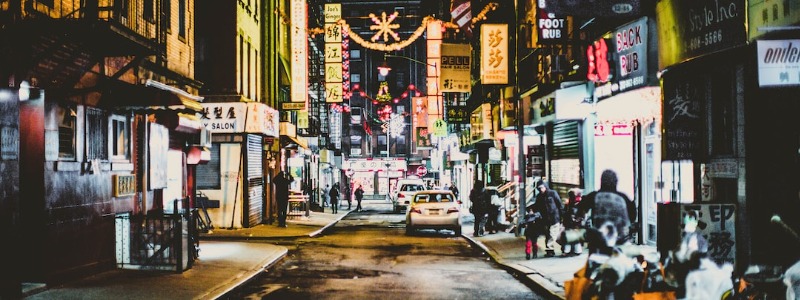Occupying several blocks in Lower Manhattan, Chinatown is one of the largest ethnic neighborhoods in New York City. Having a mixture of commercial and residential development, this historic district offers authentic regional Chinese cuisine and culture. The Museum of Chinese in America (MOCA) welcomes visitors for some history lessons on the Chinese experience in the United States. The colorful and vibrant Chinese New Year Festival is by far the biggest annual event in Chinatown. Click to book your SoHo, Little Italy and Chinatown walking tour.
Attractions
Established in 1980, the Museum of Chinese in America (MOCA) presents a detailed history of Chinese immigrants in the United States. Most of the exhibits focus on new arrivals to New York City and other major urban areas, such as San Francisco and Chicago.
More than 65,000 items are in the possession of MOCA and its affiliates. The Oral History Collection is a multimedia exhibit that includes interviews with hundreds of individuals. The Qipao/Cheongsam Collection features authentic Chinese dresses and textiles. Other permanent exhibits at MOCA include the Hazel Ying Lee Collection and CMTA Collection.
Another notable landmark in Manhattan’s Chinatown is Confucius Plaza, which overlooks the junction of the Manhattan Bridge and Bowery. Rising 44 levels above the ground, an affordable housing complex dominates the scene at this historic plaza. There’s also a bronze statue of Confucius near the courtyard of the apartment building. Standing 15 feet tall, this religious-themed statue was made by the Chinese sculptor Liu Shih.
Most visitors are drawn to Manhattan’s Chinatown for authentic Oriental food and products. The neighborhood is lined with an array of restaurants and eateries serving Cantonese, Mandarin, Fujian, Sichuan, and other regional cuisines. Some of the establishments may not look fancy from the outside, but they serve delicious and affordable dishes that are rarely available on the menus of suburban restaurants.
As you walk Canal Street and adjacent streets, you’ll notice lots of street vendors selling exotic fruit, vegetables, herbs, and other natural products imported from various regions in China. Additionally, you can find plenty of unbeatable bargains on clothing, souvenirs, jewelry, and other consumer goods on Canal Street.
History of Chinatown
In the 1850s, Chinese immigrants arrived in Lower Manhattan in relatively few numbers. The Chinese Exclusion Act of 1882 essentially halted any influx of such individuals, who had already established an ethnic enclave. Despite the restrictions, the community in Chinatown continued to grow and thrive by modest standards.
The earliest arrivals to Chinatown were mostly Cantonese-speaking people. The Immigration and Nationality Act of 1965 dramatically changed the demographics of the district. This legislation has allowed Mandarin-speaking immigrants to settle in Chinatown.
Consequently, Little Fuzhou and Little Hong Kong have established a solid presence in an area that has been traditionally dominated by Cantonese culture. Manhattan’s Chinatown remains one of the largest Chinese diaspora communities in North America.
Location and Transportation
Canal Street is the most important commercial thoroughfare in Chinatown of Manhattan. This busy street has several underground stations that are part of the New York City subway network.
For example, the A, C, and E trains stop just off 6th Avenue. The tracks under Broadway are served by the N, Q, R, and W lines. The easternmost part of the Canal Street station gets service from the J and Z lines. Overall, this subway station is one of the busiest in Manhattan.
The Metropolitan Transportation Authority (MTA) also operates numerous bus routes throughout Chinatown. Broadway is perhaps the best street to get on or off an MTA bus. As one of the premier commercial districts in Lower Manhattan, Chinatown has several indoor parking garages. However, most of the streets in this historic neighborhood have one-way traffic designations, so finding an outdoor parking spot could be an issue.

